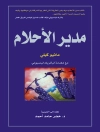This book focuses mainly on strategic decision making at a global level, which is rarely considered in approaches to sustainability. This book makes a unique contribution as the work looks at global consequences of mineral exhaustion and steps that can be taken to alleviate the impending problems. This book highlights how sustainability has become one of the most important issues for businesses, governments and society at large.
This book explores the topic of sustainability as one that is under much debate as to what it actually is and how it can be achieved, but it is completely evident that the resources of the planet are fixed in quantity, and once used, cannot be reused except through being reused in one form or another. This is particularly true of the mineral resources of the planet. These are finite in quantity, and once fully extracted, extra quantities are no longer available for future use. This book argues and presents evidencethat the remaining mineral resources are diminishing significantly and heading towards exhaustion. Once mined and consumed, they are no longer available for future use other than what can be recycled and reused.
This book demonstrates that future scarcity means that best use must be made of what exists, as sustainability depends upon this, and best use is defined as utility rather than economic value, which must be considered at a global level rather than a national level. Moreover, sustainability depends upon both availability in the present and in the future, so the use of resources requires attention to the future as well as to the present. This book investigates the alternative methods of achieving the global distribution of these mineral resources and proposes an optimum solution. This book adds to the discourse through the understanding of the importance of the depletion and finiteness of raw materials and their use for the present and the future, in order to achieve and maintain sustainability.
Tabla de materias
Chapter 1 Background to the research.- Chapter 2 The sustainability discourse.- Chapter 3 Prisoners’ Dilemma: a method for analysis.- Chapter 4 Developing the theory.- Chapter 5 Distribution: testing and evaluation.- Chapter 6 Implications for the future.- Chapter 7 Conclusions.
Sobre el autor
Shahla Seifi is Secretary and Conferences Chair of Social Responsibility Research Network (SRRNet), UK. Her research centres around sustainable development, corporate sustainability, governance in the global market and the application of game theory to sustainability problems.












